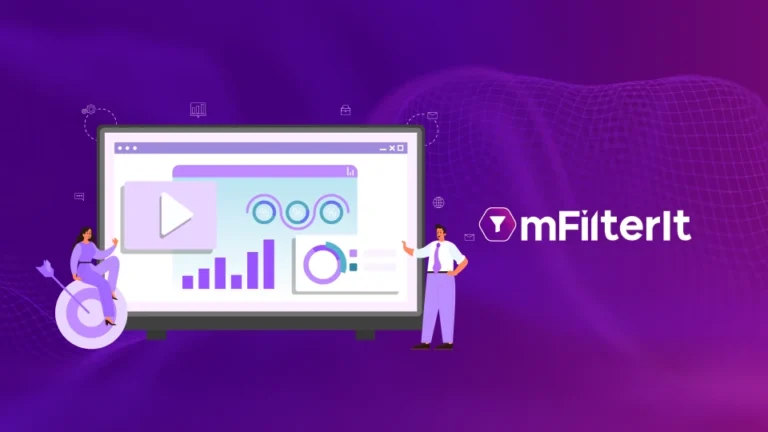Why would a consumer buy your product over the competitors, especially with an ‘n’-number of options on ecom marketplaces? It all boils down to the “trust” a customer has in your brand and its products, created using multiple marketing and advertising strategies over the years.
Trust on ecommerce platforms like Amazon, Big Basket, Flipkart, etc., is built by creating a good first impression, offering reassurances, showing off products, etc. However, while your brand is implementing online strategies to achieve this goal, it is also crucial to enhance customer journeys, manage stock availability, understand pricing intelligence, etc.
Creating successful ecommerce sales strategies also requires an in-depth understanding of your brand’s product versus the competition to learn about customer issues, most/least appreciated qualities, hero products across different ecom platforms, etc. Therefore, building successful sales strategies is possible through eCom Competitive Analytics, a.k.a., mScanIt. We bring the best methods to increase sales through mScanIt, powered by mFilterIt.
3 Important Strategies That Can Boost Sales
Find Out Customer Requirements
Viewers on ecommerce platforms often leave their queries under the Q&A or review & rating sections. Answering the commonly asked questions by potential buyers can enhance sales of the product listings. Similarly, knowing the common queries for the product listings across ecommerce platforms can enable brands to improve their customer communication inside and outside the ecommerce store.
mScanIt’s question themes encompass the times customers have used a particular phrase as part of the Q&A for a product listing. For example, suppose the theme reveals packaging mentioned sixty-four times under the questions. In that case, the brand will know that they should address it by mentioning details on the product page or running online marketing campaigns.
Answering customer queries improves the product information, and 10% of the online shoppers prefer ecommerce purchases versus physical retail stores for this very reason. Besides this, brands can utilize the word cloud representation of the themes in the Q&A section to learn about their consumers.
Enhance Your Product Page
Captivating a consumer’s attention, especially after clicking on the product listing, requires describing the product and using the apt keywords in the correct arrangement throughout the product page. Clear and crisp information that meets the potential target audiences’ needs will encourage add-to-cart actions and conversions/sales.
New users would often build trust through the content and feedback, whereas returning users are already interested in the product but are likely searching whether it encompasses the latest features/qualities. Simultaneously, all potential consumers search for trust signals such as high-quality images, good content copy, detailed product descriptions, easy on the eye title, etc.
Wouldn’t that be your perspective, too, if you will buy from a new seller/brand? Overcoming the challenge in developing and achieving perfect page benchmarking can increase consumer base and revenue and enhance the brand reputation without any paid activity, as content copies require only words.
eCom Competitive Analytics scores for title, content, and reviews, besides overall score, while measuring it against the competition. The information helps brands to know the highest possible score under each aspect and explore areas of improvement under these avenues through deep diving.
Improve Your Ads
Given that 10% (more or less if compared with the current year) of the ecommerce advertising budget goes into banner ads, developing a great banner copy is important. Include high-quality images and details that highlight the USP(s) of the product, keep it short, simple, & catchy, etc., are continuously practised by marketers.
But why does the ad copy still have such a low score compared to the competition? Knowing the aspects that increase engagement with the rival’s sponsored ads can enable brands to develop better ad copies, find a new target base, build brand trust, and ultimately increase sales.
Analyzing the ad copies will help understand the targeted buyer personas and gather more intelligence. Also, if possible, introduce usability factors in your ad copies to reach the correct audience, even if you have a wide net. Enhancing the sponsored ads improves the buyer journey through navigation, which is the only other method besides search engines on ecommerce platforms.
The factors that drive sales don’t get limited to or by these three factors only. Measuring and keeping track of share-of-shelf, keyword analytics, the share of sponsored listings, etc., also encourages or drives conversions. All these are part of eCom Competitive Analytics, which is currently used by industry leaders in electronics, FMCG, or other domains.
Final Words
Knowing the drivers of ecommerce sales also helps to acquire a competitive edge, acquire a higher share of the market revenue, fight back against vulnerabilities, and more. eCom Competitive Analytics derives accurate information about the brand and its competitor’s product listing.
Doing so allows brands to explore new growth areas, take action in real-time, reduce MAP violations, and remain attuned with the KPIs. As a result, brands achieve higher revenues and drastically improve their discoverability, availability, visibility, and other essential aspects.
For more information on the advantages of eCommerce Intelligence Solution, connect with us by leaving a comment, or drop us an email in the contact section.



